Body length: 21–70 mm.
Eyes: eye interommatidial setaeseta:
a sclerotized hair-like projection of the cuticle
absent, eye deeply emarginateemarginate:
notched at the margin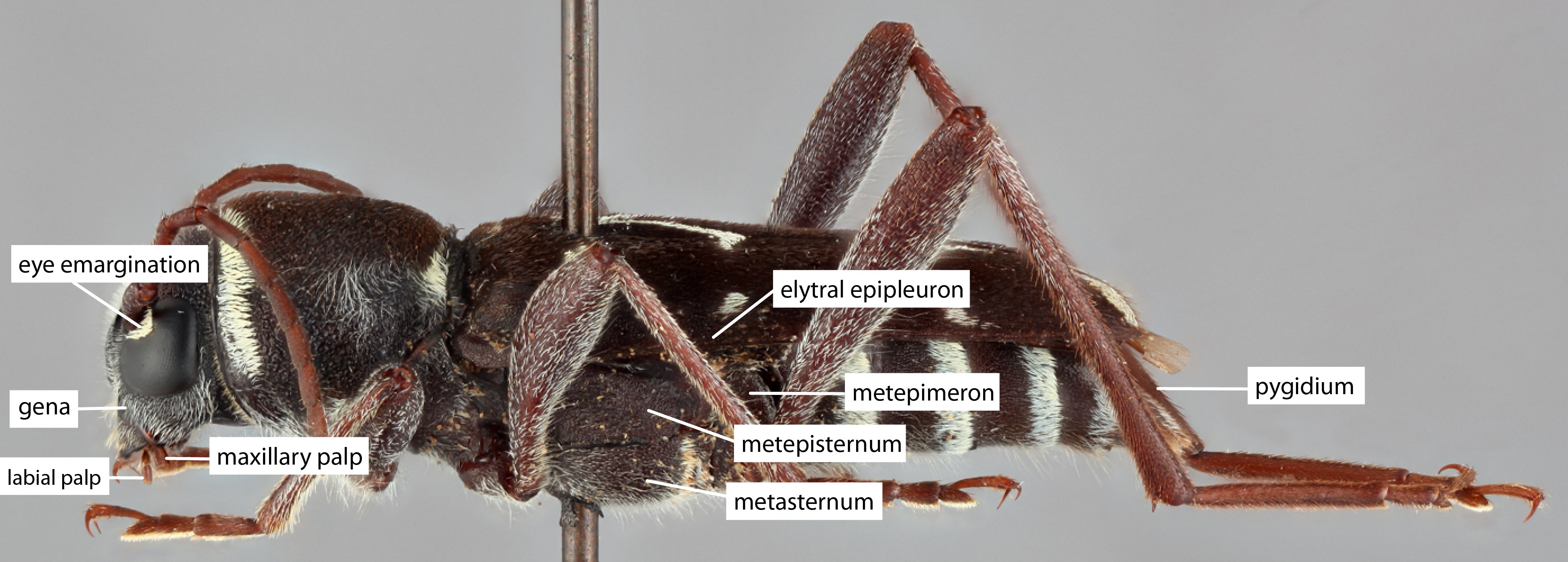 > half width, eye ommatidial density fine.
> half width, eye ommatidial density fine.
Antennaeantenna:
in larval and adult insects, paired segmented appendages, borne one on each side of the head, functioning as sense organs and bearing a large number of sensilla
: antennal length reaching/surpassing end of body, antennal flagellar segments elongateelongate:
much longer than wide
, scapescape:
the first proximal segment of the antenna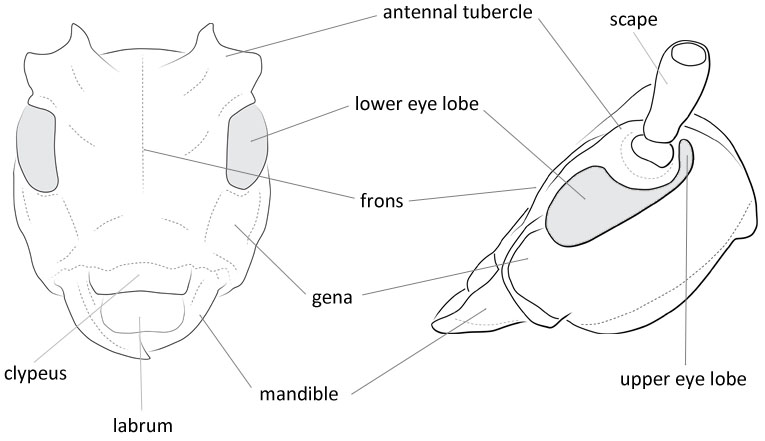 granulate at apexapex:
granulate at apexapex:
end of any structure distad to the base
, no scar or cicatrixcicatrix:
a scar; a scar-like structure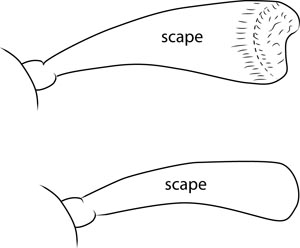 (scar) at apexapex:
(scar) at apexapex:
end of any structure distad to the base
, antennal segment 3 > scapescape:
the first proximal segment of the antenna .
.
Pronotumpronotum:
the upper and dorsal part of the prothorax
: pronotumpronotum:
the upper and dorsal part of the prothorax
shape transversetransverse:
broader than long
, pronotumpronotum:
the upper and dorsal part of the prothorax
lateral armature acute spinespine:
a protuberance with an acute (sharp) distal end
.
Prosternum: prosternal processprosternal process:
a posterior extension of the prosternum between the coxae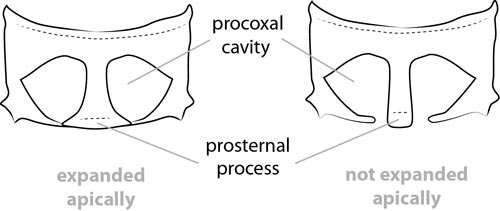 dilated at apexapex:
dilated at apexapex:
end of any structure distad to the base
, procoxal cavities open posteriorly.
Elytraelytron:
the leathery forewing of beetles, serving as a covering for the hind wings, commonly meeting opposite elytron in a straight line down the middle of the dorsum in repose
: elytral length reaching or close to end of abdomen, elytral apicesapex:
end of any structure distad to the base
emarginate or with tooth or spinespine:
a protuberance with an acute (sharp) distal end
, elytral color black, yellow, orange or white, elytral color pattern present or absent.
Legs: visible tarsomerestarsomere:
subdivision or article of the tarsus, usually numbering from two to five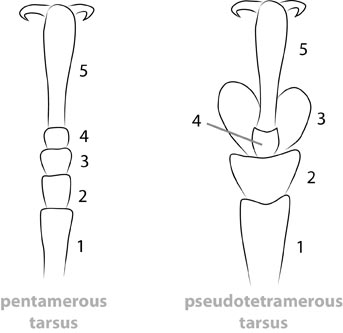 : 4, femora slender, rarely robust, protibial spursprotibial spur:
: 4, femora slender, rarely robust, protibial spursprotibial spur:
sclerotized spine(s) located at the distal tibia; can be single, double, or absent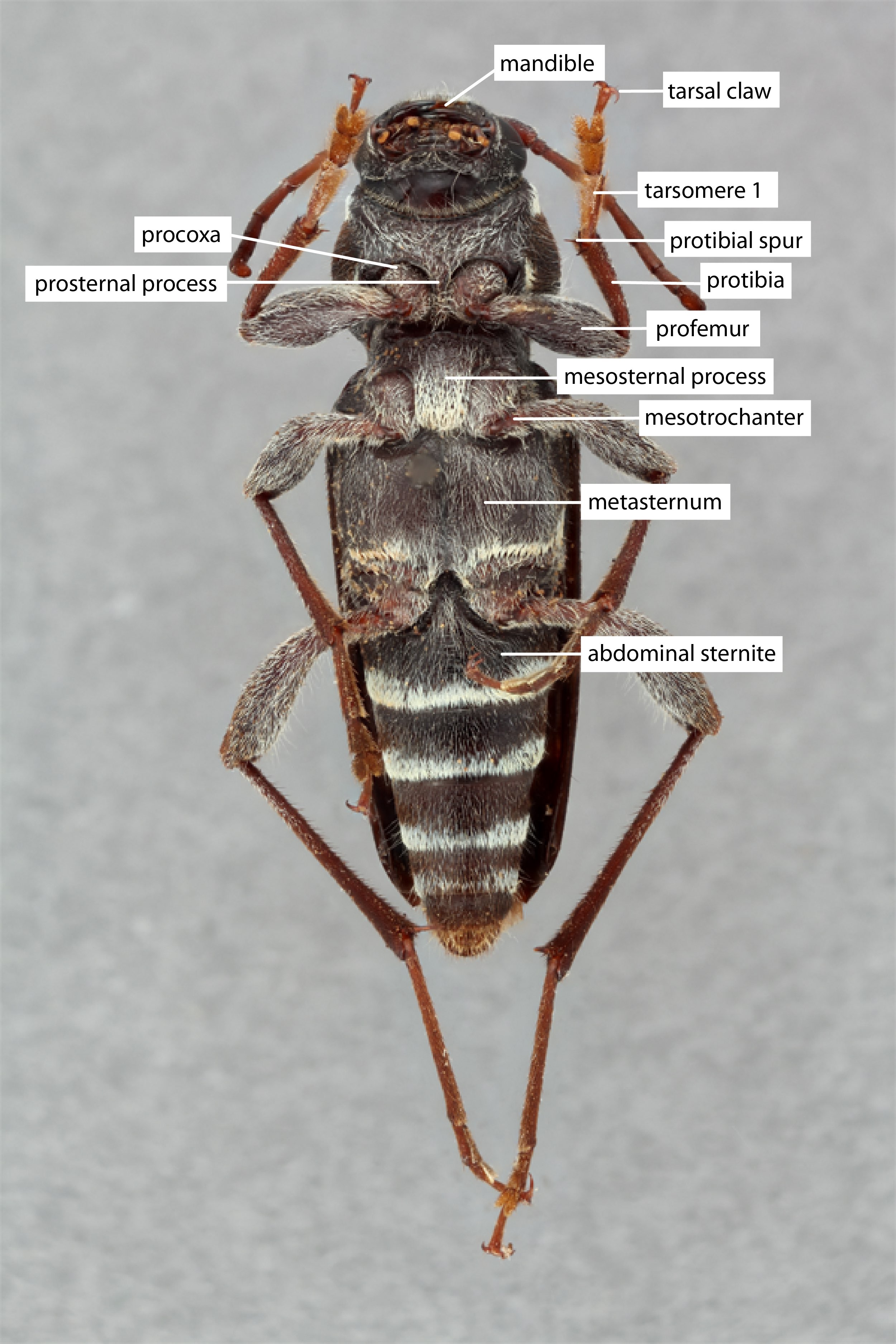 : 2, tarsal clawstarsal claw:
: 2, tarsal clawstarsal claw:
usually paired claws of the pretarsus, at the distal end of the leg simple.
simple.
Apriona, Rosenbergia, Abatocera
Batocera species have a large body size, the apexapex:
end of any structure distad to the base
of the scapescape:
the first proximal segment of the antenna has a carinacarina:
has a carinacarina:
an elevated ridge or keel, not necessarily high or acute
(cicatrixcicatrix:
a scar; a scar-like structure ), a transversetransverse:
), a transversetransverse:
broader than long
groove is present on the scapescape:
the first proximal segment of the antenna , and the 11th antennomere is normal.
, and the 11th antennomere is normal.
Palearctic (Asia), Indomalaya, Afrotropical, Australasia
broadleaf trees
60 species
Megacriodes Pascoe, 1866
Batocera (Tyrannolamia) Kriesche, 1915
Batocera (Semibatocera) Kriesche, 1915
Batocera Dejean, 1835